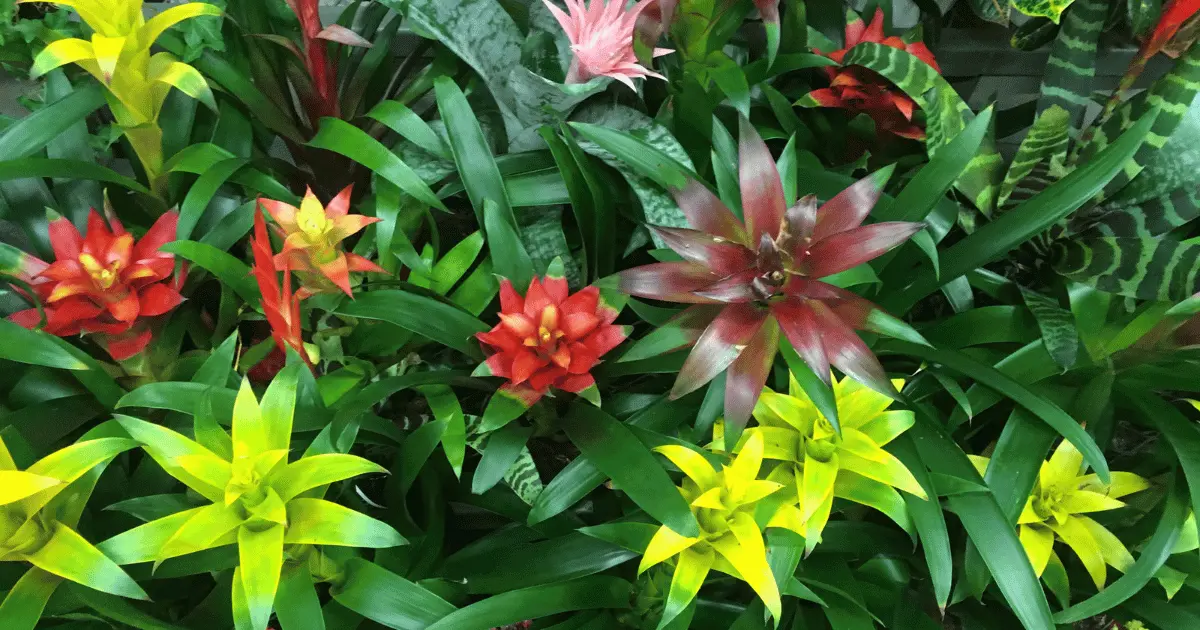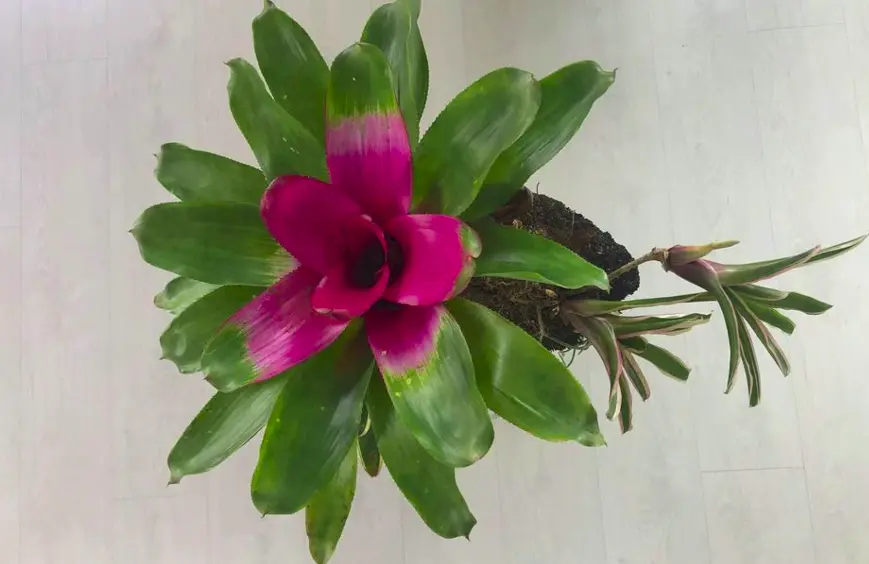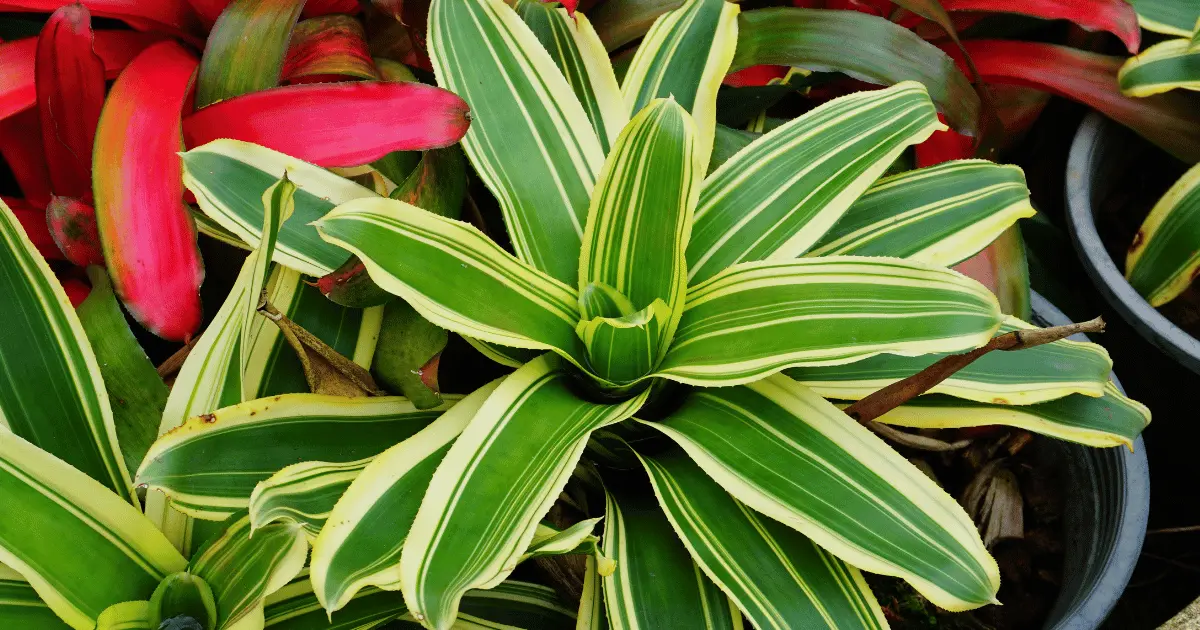Over seventy varieties of garden plants belong to the Bromelia family, each bearing uniquely patterned flowers distinctly held in profound splits. They grow sturdy succulent leaves and vibrantly colorful flowers.
Most Bromeliad varieties were initially domesticated in the West Indies and most of Latin America until scientific gardeners taught how to grow them as indoor and outdoor decorative plants.
Yes, they only bloom once in their lifetime; but when they do, it lasts for almost half a year, giving you ample time to savor their gorgeous blooms and propagate them in new pots.
Propagating Bromeliad Plants

Fully grown Bromeliads begin to bloom at maturity, and when their blooming season is over, they die out gradually. Although they typically live for 3-5 years before finally succumbing to gradual degeneration, propagating them is necessary to multiply them in their earlier and more attractive growing stages.
Bromeliads are generally propagated by growing their young pups and rooting stem cuttings. Most mature Bromeliads start to grow young offsets right before blooming, and these can be prepared in a potting mix to grow new plants. Below I’ll show you how to do this easily; you don’t need any prior skills to succeed.
Propagating Bromeliads from Young Pups
Bromeliad pups usually grow at the mother plant’s base, sometimes looking similar. It would be best to root the young pups after winter as the plant begins regaining vigor and appeal.
Using a sharp cutting tool, slice off the mature pups and set them on a dry flat surface. Pups with tiny roots growing on them will root faster than the unrooted ones. The pups can only be rooted in a soil potting mix because most Bromeliads are also categorized as air plants or epiphytic climbers, so rooting them in water is difficult.
Get your potting mix ready and plant the pups in it; with the right watering and sunshine amounts, the pups will root in 2-3 weeks. If you got up to ten pups from a single plant, you’d soon have a garden full of Bromeliads.
Propagating Bromeliads from Stem Cuttings

Bromeliads are generally propagated from stem cuttings with tiny pups and leave growing on them. Select the best stems with fully developed foliage and 2-4 nodes on each one. Cut the stems from the bottom, right below the nodes, and allow them to sit for a day or two before rooting them.
Stem cuttings are grown like the pups by planting in a soil-based potting mix. Ensure you place the pots where there’s plenty of brightly shining light indoors and water them frequently; they’ll begin to root after 2-3 weeks.
Sunshine Requirements for Bromeliads
Most Bromeliad varieties develop internal compositions called Trichomes that are mostly hairy and can be used to deflect sunlight in their direction; this is an important adaptive feature that enables the plant to survive low-light environments.
The younger Bromeliads prefer to be kept under the shade of a larger garden tree, which forms a covering all over it. Older plants, however, can take the full intensity of midday sun for up to 6 hours daily.
I always encourage my audience to allow their Bromeliads get some direct sunshine twice or thrice every week; doing this regularly encourages the plants to grow brightly colored and tastefully scenting flowers when they bloom.
Many other Bromeliad varieties might easily get sunburned when exposed to direct sunshine for a long time; when this happens, the leaves begin to look yellow or brownish.
The easiest way to know if the species you’re propagating can withstand the hot sun is to pay close attention to their phototactic responses during propagation.
Watering your young Bromeliad Pots
Having internal structures such as trichomes give Bromeliads an advantage in water retention, making them highly regarded among the most drought-tolerant garden plants available. They generally like to be kept in a dry, warm spot that won’t get damp or soggy with time.
It’s highly recommended that you only water them once in 2-3 weeks during their growing season from the beginning of April to late October, as winter approaches. During winter, they require fewer watering cycles, and you should only water them once in 3-4 weeks.
You can begin with misting and spraying during their early growing stages, but you should switch to bottom watering as they mature. Misting or spraying their leaves at maturity could cause them to become soggy and damp, which may finally terminate in leaf rots. It will help if you only water them once the top 1-inch soil layer appears dry.
If you wish to water from the bottom, raise the plant with its pot and sit it in a clean bowl of water for 5-10 minutes until it’s obvious the water has covered the entire soil mix; next, remove it from the water and allow to sit for another ten minutes, until the excess water fully drains off before you return the pot to its original position.
Best Potting Soil Mix to Propagate Bromeliads

It’s on record that almost 2/3 of all Bromeliad varieties will easily root and grow in a water jar because they’re mostly epiphytic, preferring to grow as climbers on other larger garden plants. If you want what’s best for these evening darlings, ensure they have enough room for cross ventilation and easy airflow.
Choosing the right Potting Mix is, therefore, crucial to the success of the entire growing process. I always keep my Bromeliads in a well-drained, properly aerated soil mix with good percolation and grit.
I usually blend any commercial cactus or succulents soil mix with other materials to give the soil mix a rich organic content. The commercial soil mix can be blended as follows: one part commercial mix, one part sharp sand, and one part a blend of Peat moss, charcoal, and perlite.
Your Bromeliads will only require small pots of any material, not larger than 6 inches, to grow; but as they get bigger and you begin to propagate them, you should consider growing them in larger pots.
Conclusion
Although Bromeliads aren’t particularly categorized as succulent garden plants because they have their urns as storage vessels for water and nutrients, in contrast to most succulents that store water in their roots and leaves, Bromeliads share several important similar characteristics with succulents.
Their flowers, when they bloom, appear as brightly colored red, blue, orange, pink, and purple blooms that are mostly shrouded by thick all-green leaves. Propagating them indoors is usually regarded as a sign of Protection and safety.
If you’re an adherent of Feng-Shui, then growing Bromeliads as indoor plants will bring a great balance to the energy ecosystem around you; and just in case you’re unaware of how edible their fruits can be, your local pineapple is one of the commonest Bromeliads that has been destinated for food.
